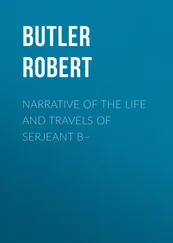Robert Vane Russell - The Tribes and Castes of the Central Provinces of India, Volume 4
Здесь есть возможность читать онлайн «Robert Vane Russell - The Tribes and Castes of the Central Provinces of India, Volume 4» — ознакомительный отрывок электронной книги совершенно бесплатно, а после прочтения отрывка купить полную версию. В некоторых случаях можно слушать аудио, скачать через торрент в формате fb2 и присутствует краткое содержание. Жанр: foreign_prose, История, foreign_edu, foreign_antique, на английском языке. Описание произведения, (предисловие) а так же отзывы посетителей доступны на портале библиотеки ЛибКат.
- Название:The Tribes and Castes of the Central Provinces of India, Volume 4
- Автор:
- Жанр:
- Год:неизвестен
- ISBN:нет данных
- Рейтинг книги:4 / 5. Голосов: 1
-
Избранное:Добавить в избранное
- Отзывы:
-
Ваша оценка:
- 80
- 1
- 2
- 3
- 4
- 5
The Tribes and Castes of the Central Provinces of India, Volume 4: краткое содержание, описание и аннотация
Предлагаем к чтению аннотацию, описание, краткое содержание или предисловие (зависит от того, что написал сам автор книги «The Tribes and Castes of the Central Provinces of India, Volume 4»). Если вы не нашли необходимую информацию о книге — напишите в комментариях, мы постараемся отыскать её.
The Tribes and Castes of the Central Provinces of India, Volume 4 — читать онлайн ознакомительный отрывок
Ниже представлен текст книги, разбитый по страницам. Система сохранения места последней прочитанной страницы, позволяет с удобством читать онлайн бесплатно книгу «The Tribes and Castes of the Central Provinces of India, Volume 4», без необходимости каждый раз заново искать на чём Вы остановились. Поставьте закладку, и сможете в любой момент перейти на страницу, на которой закончили чтение.
Интервал:
Закладка:
“In these caverns or vaults there were said to be serpents, which guarded the caverns and consumed most of the flesh of the pigs and dough-cakes which were thrown in. Afterwards—apparently at the next annual festival—the decayed remains of the pigs, the cakes, and the pine-branches were fetched by women called ‘drawers,’ who, after observing, rules of ceremonial purity for three days, descended into the caverns, and, frightening away the serpents by clapping their hands, brought up the remains and placed them on the altar. Whoever got a piece of the decayed flesh and cakes, and sowed it with the seed-corn in his field, was believed to be sure of a good crop.
“To explain this rude and ancient rite the following legend was told. At the moment when Pluto carried off Proserpine, a swineherd called Eubuleus chanced to be herding his swine on the spot, and his herd was engulfed in the chasm down which Pluto vanished with Proserpine. Accordingly, at the Thesmophoria pigs were annually thrown into caverns to commemorate the disappearance of the swine of Eubuleus. It follows from this that the casting of the pigs into the vaults at the Thesmophoria formed part of the dramatic representation of Proserpine’s descent into the lower world; and as no image of Proserpine appears to have been thrown in, we may infer that the descent of the pigs was not so much an accompaniment of her descent as the descent itself, in short, that the pigs were Proserpine. Afterwards, when Proserpine or Demeter (for the two are equivalent) became anthropomorphic, a reason had to be found for the custom of throwing pigs into caverns at her festival; and this was done by saying that when Pluto carried off Proserpine, there happened to be some swine browsing near, which were swallowed up along with her. The story is obviously a forced and awkward attempt to bridge over the gulf between the old conception of the corn-spirit as a pig and the new conception of her as an anthropomorphic goddess. A trace of the older conception survived in the legend that when the sad mother was searching for traces of the vanished Proserpine, the footprints of the lost one were obliterated by the footprints of a pig; originally, we may conjecture, the footprints of the pig were the footprints of Proserpine and of Demeter herself. A consciousness of the intimate connection of the pig with the corn lurks in the legend that the swineherd Eubuleus was a brother of Triptolemus, to whom Demeter first imparted the secret of the corn. Indeed, according to one version of the story, Eubuleus himself received, jointly with his brother Triptolemus, the gift of the corn from Demeter as a reward for revealing to her the fate of Proserpine. Further, it is to be noted that at the Thesmophoria the women appear to have eaten swine’s flesh. The meal, if I am right, must have been a solemn sacrament or communion, the worshippers partaking of the body of the god.”
8. Estimation of the pig in India
We thus see how the pig in ancient Greece was worshipped as a corn-deity because it damaged the crops and subsequently became an anthropomorphic goddess. It is suggested that pigs are offered to Bhainsāsur by the Hindus for the same reason. But there is no Hindu deity representing the pig, this animal on the contrary being regarded as impure. It seems doubtful, however, whether this was always so. In Rājputāna on the stone which the Regent of Kotah set up to commemorate the abolition of forced taxes were carved the effigies of the sun, the moon, the cow and the hog, with an imprecation on whoever should revoke the edict. 8 8 Rājasthān , ii. p. 524.
Colonel Tod says that the pig was included as being execrated by all classes, but this seems very doubtful. It would scarcely occur to any Hindu nowadays to associate the image of the impure pig with those of the sun, moon and cow, the representations of three of his greatest deities. Rather it gives some reason for supposing that the pig was once worshipped, and the Rājpūts still do not hold the wild boar impure, as they hunt it and eat its flesh. Moreover, Vishnu in his fourth incarnation was a boar. The Gonds regularly offer pigs to their great god Bura Deo, and though they now offer goats as well, this seems to be a later innovation. The principal sacrifice of the early Romans was the Suovetaurilia or the sacrifice of a pig, a ram and a bull. The order of the words, M. Reinach remarks, 9 9 Orphèus , p. 152.
is significant as showing the importance formerly attached to the pig or boar. Since the pig was the principal sacrificial animal of the primitive tribes, the Gonds and Baigas, its connection with the ritual of an alien and at one time hostile religion may have strengthened the feeling of aversion for it among the Hindus, which would naturally be engendered by its own dirty habits.
9. The buffalo as a corn-god
It seems possible then that the Hindus reverenced the wild boar in the past as one of the strongest and fiercest animals of the forest and also as a destroyer of the crops. And they still make sacrifices of the pig to guard their fields from his ravages. These sacrifices, however, are not offered to any deity who can represent a deified pig but to Bhainsāsur, the deified buffalo. The explanation seems to be that in former times, when forests extended over most of the country, the cultivator had in the wild buffalo a direr foe than the wild pig. And one can well understand how the peasant, winning a scanty subsistence from his poor fields near the forest, and seeing his harvest destroyed in a night by the trampling of a herd of these great brutes against whom his puny weapons were powerless, looked on them as terrible and malignant deities. The sacrifice of a buffalo would be beyond the means of a single man, and the animal is now more or less sacred as one of the cow tribe. But the annual joint sacrifice of one or more buffaloes is a regular feature of the Dasahra festival and extends over a great part of India. In Betūl and other districts the procedure is that on the Dasahra day, or a day before, the Māng and Kotwār, two of the lowest village menials, take a buffalo bull and bring it to the village proprietor, who makes a cut on its nose and draws blood. Then it is taken all round the village and to the shrines of the gods, and in the evening it is killed and the Māng and Kotwār eat the flesh. It is now believed that if the blood of a buffalo does not fall at Dasahra some epidemic will attack the village, but as there are no longer any wild buffaloes except in the denser forests of one or two Districts, the original meaning of the rite might naturally have been forgotten. 10 10 The sacrifice is now falling into abeyance, as landowners refuse to supply the buffalo.
10. The Dasahra festival
The Dasahra festival probably marks the autumnal equinox and also the time when the sowing of wheat and other spring crops begins. Many Hindus still postpone sowing the wheat until after Dasahra, even though it might be convenient to begin before, especially as the festival goes by the lunar month and its date varies in different years by more than a fortnight. The name signifies the tenth day, and prior to the festival a fast of nine days is observed, when the pots of wheat corresponding to the gardens of Adonis are sown and quickly sprout up. This is an imitation of the sowing and growth of the real crop and is meant to ensure its success. During these nine days it is said that the goddess Devi was engaged in mortal combat with the buffalo demon Mahisāsur or Bhainsāsur, and on the tenth day or the Dasahra she slew him. The fast is explained as being observed in order to help her to victory, but it is really perhaps a fast in connection with the growing of the crops. A similar nine daysfast for the crops was observed by the Greeks. 11 11 Dr. Jevons, Introduction to the History of Religion , p. 368.
Интервал:
Закладка:
Похожие книги на «The Tribes and Castes of the Central Provinces of India, Volume 4»
Представляем Вашему вниманию похожие книги на «The Tribes and Castes of the Central Provinces of India, Volume 4» списком для выбора. Мы отобрали схожую по названию и смыслу литературу в надежде предоставить читателям больше вариантов отыскать новые, интересные, ещё непрочитанные произведения.
Обсуждение, отзывы о книге «The Tribes and Castes of the Central Provinces of India, Volume 4» и просто собственные мнения читателей. Оставьте ваши комментарии, напишите, что Вы думаете о произведении, его смысле или главных героях. Укажите что конкретно понравилось, а что нет, и почему Вы так считаете.












